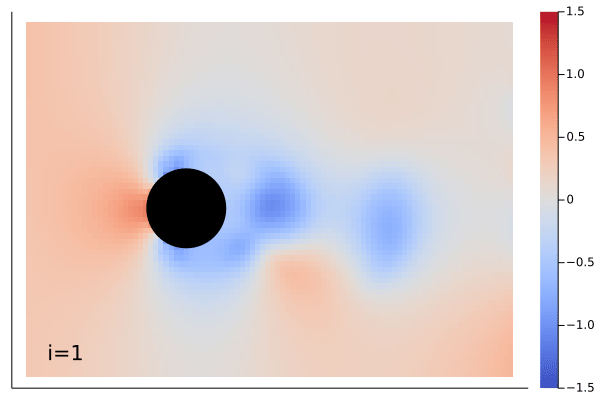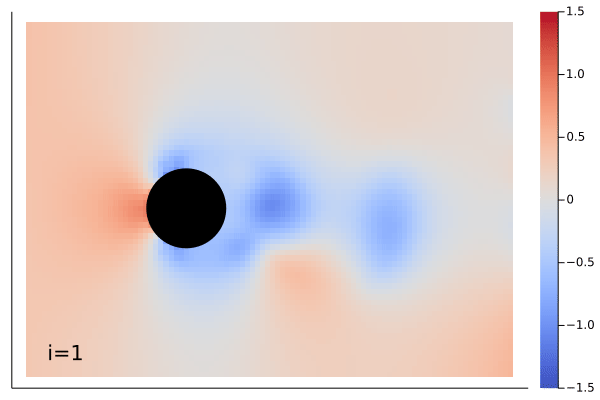| Documentation | Build Status |
|---|---|
 |
| Ground Truth | Inferenced |
|---|---|
 |
 |
The demonstration showing above is Navier-Stokes equation learned by the MarkovNeuralOperator with only one time step information.
Example can be found in example/FlowOverCircle.
Neural operator is a novel deep learning architecture. It learns a operator, which is a mapping between infinite-dimensional function spaces. It can be used to resolve partial differential equations (PDE). Instead of solving by finite element method, a PDE problem can be resolved by training a neural network to learn an operator mapping from infinite-dimensional space (u, t) to infinite-dimensional space f(u, t). Neural operator learns a continuous function between two continuous function spaces. The kernel can be trained on different geometry, which is learned from a graph.
Fourier neural operator learns a neural operator with Dirichlet kernel to form a Fourier transformation. It performs Fourier transformation across infinite-dimensional function spaces and learns better than neural operator.
Markov neural operator learns a neural operator with Fourier operators. With only one time step information of learning, it can predict the following few steps with low loss by linking the operators into a Markov chain.
Currently, the FourierOperator layer is provided in this work.
As for model, there are FourierNeuralOperator and MarkovNeuralOperator provided. Please take a glance at them here.
model = Chain(
# lift (d + 1)-dimensional vector field to n-dimensional vector field
# here, d == 1 and n == 64
Dense(2, 64),
# map each hidden representation to the next by integral kernel operator
FourierOperator(64=>64, (16, ), gelu),
FourierOperator(64=>64, (16, ), gelu),
FourierOperator(64=>64, (16, ), gelu),
FourierOperator(64=>64, (16, )),
# project back to the scalar field of interest space
Dense(64, 128, gelu),
Dense(128, 1),
flatten
)Or one can just call:
model = FourierNeuralOperator(
ch=(2, 64, 64, 64, 64, 64, 128, 1),
modes=(16, ),
σ=gelu
)And then train as a Flux model.
loss(𝐱, 𝐲) = sum(abs2, 𝐲 .- model(𝐱)) / size(𝐱)[end]
opt = Flux.Optimiser(WeightDecay(1f-4), Flux.ADAM(1f-3))
Flux.@epochs 50 Flux.train!(loss, params(model), data, opt)PDE training examples are provided in example folder.
Time dependent Navier-Stokes equation
Super resolution on time dependent Navier-Stokes equation
-
FourierOperatorlayer - One-dimensional Burgers' equation example
- Two-dimensional with time Navier-Stokes equations example
-
MarkovNeuralOperatormodel - Flow over a circle prediction example
-
NeuralOperatorlayer - Poisson equation example